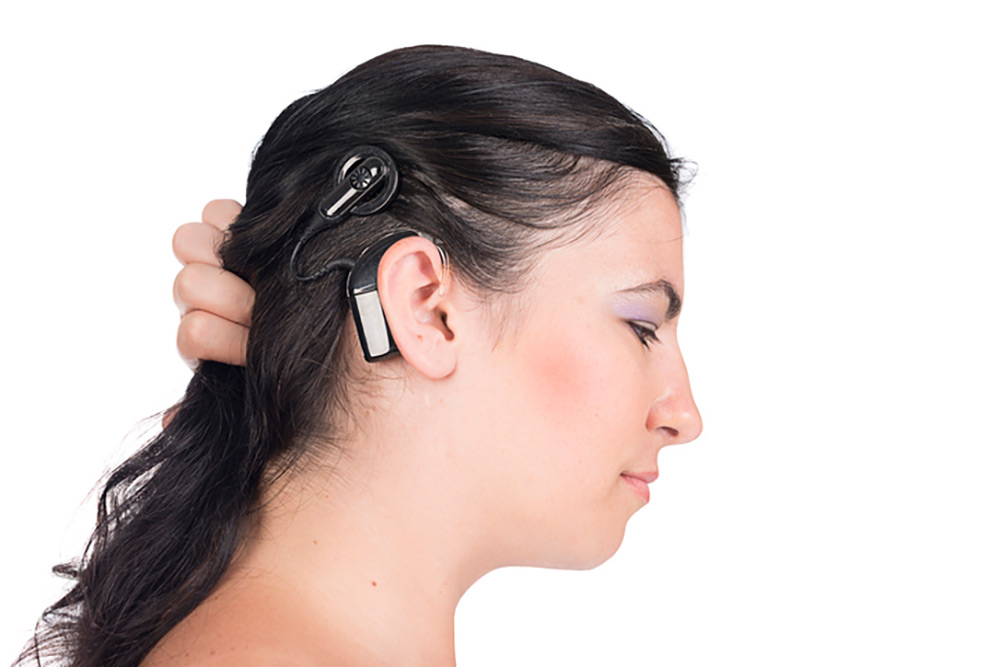
iStock
By Mary Carpenter
2023 “has really has been the year of the ear, with hearing aids going over the counter and new research confirming how important hearing is for brain health,” according to the Washington Post. For some people, however, such as Lake Tahoe-based health editor L.D., her hearing aids don’t offer enough help for conversations in noisy rooms, or for watching TV or going to the movies without captions—leading her to begin considering cochlear implants (CIs).
L.D. started thinking about CIs after two friends reported remarkable improvement following their implantation surgeries despite the learning curve required for adjusting to the unfamiliar computer-generated sounds; and for one friend, dizziness lasting several months. The CI bypasses damaged portions of the ear to directly stimulate the auditory nerve, while hearing aids simply amplify sound— to improve detection after a lifetime of damage, often by loud noise over a lifetime.
CI application has “expanded…from the relatively small population of totally deaf individuals with little or no residual hearing, to the much larger population of people with cochlear hearing loss who have difficulties understanding speech with acoustic hearing aids in one or both ears,” writes speech pathologist Isabelle Boisvert at the University of Sydney. “Cochlear implantation is beneficial to the majority of adults of any age who have limited aided speech perception abilities.”
Older adults still have the lowest relative utilization rates of CIs, though in recent years “a shift has occurred, resulting in improved access,” according to otolaryngologists at the University of Colorado and the Mayo Clinic. Yet, “despite growing incidence among those with qualifying hearing loss, cochlear implants remain widely underutilized.”
The more than 120,000 CI devices implanted in American adults as of 2019, along with about 65,000 in children, represents low penetration of the U.S. market compared to that in other countries, according to CI manufacturers. Reasons include lack of understanding about how implants work along with concerns about what is involved in implanting and adjusting to the CI—as well as opposition from members of the deaf community.
But the biggest obstacle may be acquiring either clear information about how CIs might help or an accurate determination of insurance coverage eligibility — with both varying from one specialist or clinic to another. Writes Boisvert, “Access to cochlear implantation may be delayed for someone with poor speech perception scores but better hearing thresholds—even if functional hearing for communication could reasonably be improved with implantation.” “Functional” refers to real-life applications, such as participating in conversations.
Last year, Medicare increased its coverage, based on new research, to make CIs “available to millions of additional individuals with hearing loss,” according to the Washington University Department of Otolaryngology. The “expanded candidacy profile” includes individuals with scores on sentence recognition tests up to and including 60%—compared with 40% previously. Said department chair Craig Buchman, “The future for these individuals looks brighter than ever because of this new provision.”
Heralding the importance of functional hearing to brain health, a recent Washington Post headline read: “Hearing aids might cut cognitive-decline risk by nearly half.” In a large-scale study of nearly 1,000 adults ages 70 to 84 deemed at higher risk for dementia, “hearing intervention [hearing aids and counseling with an audiologist] had a significant impact on reducing cognitive decline effects of hearing loss.”
The extra effort required for people with hearing loss to understand what others are saying may help explain worse cognition in these people, Columbia University otolaryngologist Justin Golub told the Post. “The necessary brainpower leaves fewer cognitive resources to process what is heard.”
Alternatively, receiving less auditory input from the inner ear could diminish stimulation of the temporal lobe with “cascading influences on brain structure and function,” said Golub. A third possibility suggests that “people with hearing loss tend to be less social, and as a result have less cognitive stimulation.”
Early hearing loss tends to be imperceptible: unlike diminishing vision, which makes it difficult to read street signs, people are often unaware of sounds they cannot hear. But even mild hearing loss can create the feeling, as some describe it, of slowly becoming untethered from the world. The largest study to date, including more than 100,000 people over age 66, associated hearing loss with increased risk of depression, falls and dementia—but also showed that hearing aids lowered risks for all three.
Because implantation surgery might destroy residual natural hearing, losing that without getting any benefit from the implant is one risk of choosing a CI. Additional questions about CIs concern whether to get one implant or one in each ear; and the amount of time and money required for rehab—with concern about whether that will be also covered by insurance.
Despairing that she might never see another movie in the theater, however, L.D. recently encountered “closed captioning” via special eyeglasses, worn over existing eyewear, that display captions while the movie is playing. By contrast, “listening devices” offered at theaters and other performances are often unreliable. Still L.D. is planning an October eye clinic visit in the hope that she might qualify for a CI.
—Mary Carpenter regularly reports on topical subjects in health and medicine.
